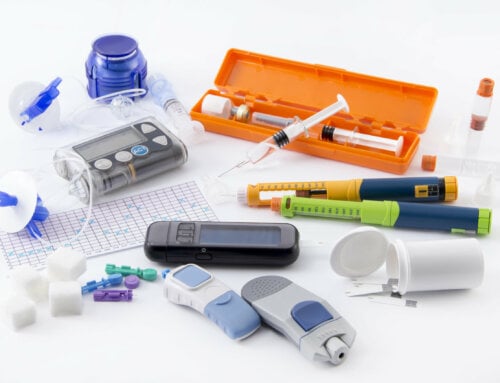Maintaining a healthy weight is essential to control blood sugar and avoid related health problems. The plate method and counting carbohydrates are two leading ways to help people with diabetes choose the right foods. Consider whether the plate method or counting carbohydrates works better for you!
- People need to consume the right levels of carbohydrates, protein and fat to stay healthy. Carbohydrates have the largest impact on blood sugar because 100 percent are broken down into glucose. White bread, pasta, soft drinks, fruit juice and sugar end up as glucose and can cause blood sugar levels to soar. Whole grains, fruits, vegetables and legumes are better choices and break down more slowly with less blood sugar impact.
- Carbohydrate counting involves reading the labels on foods to find out the carbohydrate content. Counting carbohydrates also helps with portion control. Your diabetes educator or dietitian can tell you the grams of carbohydrates to consume daily. Often people who take insulin before meals count carbohydrates to determine how much insulin to take.
- Carbohydrates are counted by the number of grams. One carbohydrate equals 15 grams. Generally speaking, to lose weight women should have 2 to 3 servings per meal or 30 to 45 grams of carbohydrates. Men should have 3 to 4 servings per meal or 45 to 60 of carbohydrates. To maintain weight, some women eat 3 to 4 servings per meal or 45 to 60 grams. Men consume 4 servings per meal or 60 grams.
- The plate method involves portion sizes. Portion guidelines and recommended serving sizes make the plate method easy to understand. There are portion control plates that can help you visualize correct food amounts. Protein- meat, poultry, tofu or fish should be 3-5ounces or around the size of the palm of your hand and placed in one quarter of the plate. Carbohydrates should include your 2-4 servings per meal-one slice of bread, ½ cup of corn or potatoes, ½ cup of pasta or rice or ¾ cup of dry cereal and should occupy the second quarter of the plate. Recommended portions for fresh or cooked non starchy vegetables are the other half of the plate. Milk and fruit are added to the side of the plate for a complete meal. Ways to control portions include eating less, avoiding super size items, utilizing the portion plate and staying away from all you can eat buffets.
- Carbohydrate counting does not mean eating an unlimited amount of foods that do not contain carbohydrates. In other words, carbohydrates are not your only dietary concern. Portion control, the number of calories, fat content, sodium and cholesterol are other important considerations. The plate method offers an overall picture of what you could eat for breakfast, lunch and dinner and not remain hungry It includes all food groups.
Some people with diabetes prefer the plate method while others count carbohydrates. Your diabetes care team can help you choose the best way to maintain a healthy diet. The key factor is using a system that works for you everyday to help you achieve optimum health!






Leave A Comment